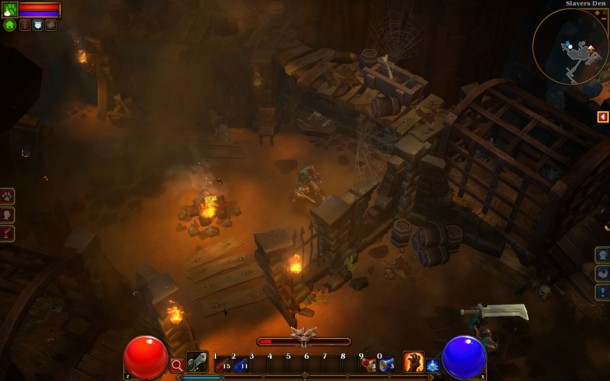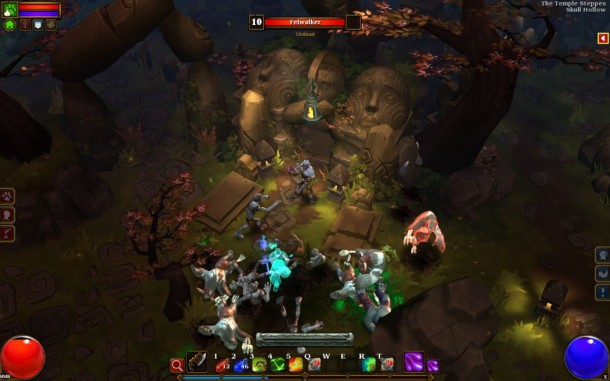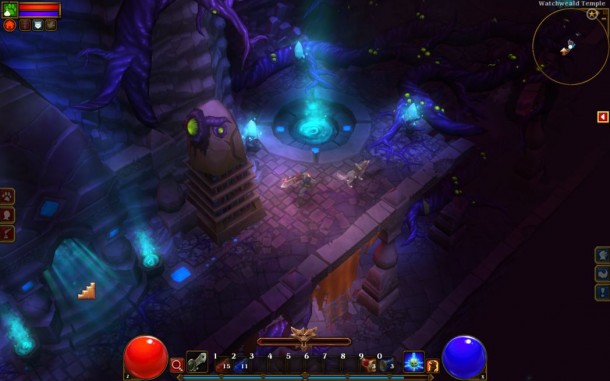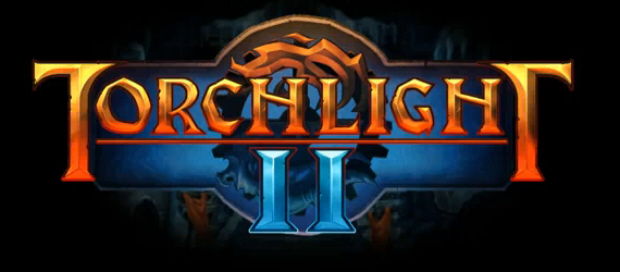Torchlight was released in 2009 to much critical avail. One complaint was leveled, however, and that was the lack of a cooperative mode. Runic took their lumps. The original Torchlight was developed on a shoestring budget in 11 months to provide capital for an eventual MMO set in the same universe. Torchlight II had a two and a half year development cycle, with no MMO plans getting in the way. What did Runic do this time around? They made an amazing game.
I booted up Torchlight II last Saturday morning, ready to put in an hour or so before doing some work around the house. So, four hours later when I realized that I was still sitting at my desk, I was bummed that I had forgotten to do my real world work. Ten seconds later I beat a named enemy (a sub-boss, if you will), got a new bad ass shield and forgot that I had work to do at all. Torchlight II is all about the loot, and the progression.

Through the 24 hours of game time I logged, and the 17,000 enemies that felt the cold steel of my blade, I was never wanting for new loot. One-handed swords, axes, claws, clubs, hammers, pistols, wands, or two-handed swords, pikes, staffs, shotguns, cannons, shields, helmets, bracers, gloves, boots, pants, armor, necklaces, rings, socketable gems…the list of different types of loot goes on for ages, let alone the variations that come into play in each of those categories.
New to this game is unique loot for your pet. My ferret, lovingly named, “Mr. Goggles,” was as much of a loot whore as I was. He couldn’t wait to put on a new collar, or get a new tag. Torchlight was much praised for giving you the ability to give your old gear to your pet, and you could send him off to town to sell it. On top of that, in Torchlight II, your pet now has the ability to return from town with items that you tell him to buy.
The enemies in Torchlight II are varied in significant ways. Each of the four acts has a new style and ambience, with that, a unique set of enemies is presented. Bosses and named enemies in action RPGs tend to draw criticism from many for their straight forward tactics. Runic crafted many bosses that have a unique set of tactics. Torchlight II forces you to go in measured, take a moment to figure out what the boss is trying to do, and then you strike. It makes defeating the hulking enemies that much more satisfying.

For the first six or seven hours, I rolled with a two-handed staff that had dealt good damage per second (DPS) that had a 50% chance to possibly deal a huge fire and lightning damage bonus. In my secondary slot I carried a standard bow with good attack speed. I knew that was the best way to play. Then, I picked up a pretty cool shield and a quick hitting axe that I wanted to try out. So, I ditched my staff and went with the axe and shield. I then knew I was wrong before, and knew this was the way to play. Many options are presented, and they are all valid ways to play the game.
I adored my weapons, but as an Embermage (ember being the basis of magic in Torchlight, not just fire), my magical abilities added a huge depth to the combat that I didn’t expect. I had letter keys (on my keyboard) bound to cast health and mana potions for both myself and Mr. Goggles, and I had the entirety of one through zero hotbar set to different spells and summons. I gave Mr. Goggles (who can cast his own spells without needing a cue) a couple of summon spells so he could call in multiple zombies, and a skeleton. At a moment’s notice, we could even out the odds in battle very easily.
The way the stats and skills are broken down is simple, yet deep. The lack of an actual skill tree contributes heavily to the simplicity. You will never be locked out of a skill type by choosing something different. The depth comes from the sheer number of skills I could learn as an Embermage. The 21 active skills, and nine passive skills gave me a ton of different ways I could spec if I chose to. The stat points can be allocated to strength, dexterity, focus, and vitality. Every level gained from experience you earn five stat points and you are free to do with them as you wish. Skill points are earned under a second bar, called Fame. Fame is gained by getting kills on named enemies, bosses, and completing quests.
The story in Torchlight II is a bit light. There is only a cutscene at the beginning of each of the four acts, and the majority of the story details comes from a text bubble from the leader of each area. The actual story that is presented, however, is very similar to older games in the action role-playing game genre.

Just like from Diablo to Diablo II, Runic expanded the scope and scale of the world to include multiple towns, and multiple dungeons spawning off of those towns, and usually, multiple dungeons spawning off of those dungeons. The world feels like a wonderful, vibrant place. Each area’s unique looks really makes it look like you are trekking to different areas of the world as you are progressing through the game.
If you ever feel like partnering up with a friend, just jump into the online lobby (this requires a free Runic ID) and create a game for yourself and your friends, or randoms to jump into. It is easy to do, and the five to six matches that I created or joined were problem free. Runic added in instanced loot, which means no fighting over weapons and gold after you defeat an enemy. One of the matches I was in was a six-man cooperative rumble that was well beyond hectic. It was fun, but just know that Runic recommends not playing with more than three other people. There is also a LAN option for anyone that wants to slay some monsters all night long with their friends in the room tagging along.
Torchlight II is not a technical masterpiece. You won’t need a Kepler GPU or an Ivy Bridge CPU to run the game. It scales incredibly well to just about any machine you feel like running it on. The beautiful art design makes up for low requirements for specs in a fashion similar to that of World of Warcraft. Numerous times, I found myself running through dungeons with the sole purpose of looking at the incredible world design.
Torchlight II’s depth enthralled me from moment one, and if it wasn’t for other games I had to play, I would still be in there grinding a new game plus with my level 50 character. I had a great time finding out what the next enemy would be around the next corner from beginning to end. The story may be a bit light, but the combat, loot, design, and mechanics make Torchlight II one of my favorite game experiences in quite some time.
This review is based on a preview build that was content complete provided by Runic Games.
SideQuester Dylan Sabin provided notes on Torchlight II to assist in the review process.


No Comments